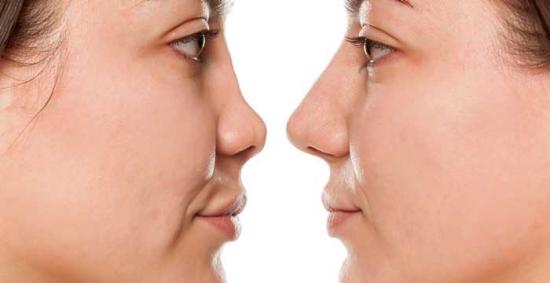Revision Rhinoplasty
Revision rhinoplasty is an operation performed to correct errors in an operation that, for some reason, have not given the desired results.
When deciding on revision surgery, one should not rush too much. The patient should not act hastily when deciding on revision surgery. Swelling and bruises that form on the face after the first aesthetic operation may prevent the new shape of the nose from being seen. A period of 6 to 12 months must elapse for the correction of the nose to completely take its final shape. Of course, this period may vary depending on the anatomical structure of the patient or the surgical technique to be used in surgery. If there are still concerns about the nose after the completion of the specified period, you can first contact the plastic surgeon, who performed your surgery.
It should be noted that the success rate of any intervention made before the end of this period will be low. It is widely believed among people that the desired shape can be easily given to the nose with revision surgeries. However, revision rhinoplasty can correct only the reshaped form of the nose created during the first surgical intervention. In other words, revision rhinoplasty is not the procedure intended to reshape the nose. For this reason, one should not act on information that is not based on medical grounds, and the necessary details should be learned from those who are professionals in this field.
- What can be done with revision rhinoplasty? In revision rhinoplasty, corrections are usually made for nasal tip ptosis or piggy nose problems.
In addition, interventions can also be made for the nasal ridge that has been taken reduced inadequately or excessively. Revision surgeries are important surgical interventions that should not be underestimated. This is because radical changes in the cartilage or bone structure may have occurred at the support point of the patient's nose after the previous surgical intervention. In such cases, there may be need for new cartilage grafts to reshape the nose. A revision operation is performed using cartilages taken from the ear, ribs, or other parts of the body. In some cases, alloplastic, i.e. artificial materials, can also be preferred as an alternative to these methods. There are 2 separate techniques used in revision rhinoplasty, which are called open and closed techniques. If the deformation of the patient's nose is serious that requires much correction, an open technique is preferable. In addition, sometimes the patient's problem can be eliminated with very small interventions, and the desired results can be achieved. In revision rhinoplasty, surgeon who performed the first surgery is always preferred. This is because the surgeon who knows best the dynamics of the operation and what went wrong is the surgeon who performed the first operation.
If the patient has problems only on the nasal ridge, the closed technique is used. In revision surgeries, whether open or closed method is used, the aim is to make the nose look natural and to eliminate intranasal problems or breathing problems (if any). As with all aesthetic surgeries, proper care and meticulousness are the first condition in revision rhinoplasty. Satisfactory results can be obtained only with the intervention of an experienced specialist physician.






